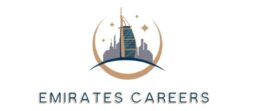
Freelance Content Creator Feedback: How to Obtain and Track Performance Metrics for Your Resume
Introduction:
As a freelance content creator, your ability to secure new projects often hinges on the quality of your portfolio and resume. One of the most effective ways to enhance these tools is by incorporating performance metrics and feedback from past projects. This not only demonstrates your skills and achievements but also provides potential clients with tangible evidence of your value. In this guide, we’ll explore how to obtain and track performance metrics and feedback, and how to effectively present these on your resume to stand out in a competitive market.
Why Metrics and Feedback Matter:
Performance metrics and client feedback are crucial for freelance content creators for several reasons:
- Credibility: Quantifiable results and positive feedback add credibility to your work and showcase your effectiveness.
- Differentiation: Metrics help differentiate you from other freelancers by highlighting your unique contributions and successes.
- Continuous Improvement: Tracking performance allows you to identify areas for improvement and refine your skills.
Obtaining Performance Metrics:
To effectively track and showcase your performance, you need to collect relevant data from your projects. Here are some steps to follow:
- Set Clear Objectives: Before starting a project, establish clear goals and key performance indicators (KPIs) with your client. These could include:
- Website traffic (e.g., page views, unique visitors)
- Engagement metrics (e.g., likes, shares, comments)
- Conversion rates (e.g., newsletter sign-ups, product purchases)
- SEO performance (e.g., keyword rankings, organic traffic)
- Use Analytics Tools: Utilize analytics tools to track performance metrics. Some essential tools include:
- Google Analytics: Tracks website traffic, user behavior, and conversion rates.
- Social Media Analytics: Most social media platforms offer built-in analytics for tracking engagement metrics.
- SEO Tools: Tools like Ahrefs, SEMrush, and Moz can help track keyword rankings and organic traffic.
- Client Collaboration: Work closely with clients to gain access to relevant data. Request regular updates on the performance of your content and ask for detailed reports where possible.
- Surveys and Feedback Forms: After completing a project, ask clients to provide feedback through surveys or feedback forms. Use questions that elicit detailed responses about your work’s impact, such as:
- How did the content meet your objectives?
- What specific results did the content achieve?
- How satisfied are you with the overall quality and effectiveness of the content?
Tracking Performance Metrics:
Once you have obtained the necessary data, it’s important to track and organize it effectively:
- Create a Performance Tracking Spreadsheet: Maintain a spreadsheet to record and analyze performance metrics. Include columns for:
- Project name
- Client name
- KPIs (e.g., website traffic, engagement, conversions)
- Actual performance metrics
- Client feedback
- Visualize Data: Use graphs and charts to visualize your performance data. This can help you identify trends and patterns over time, making it easier to showcase your achievements.
- Analyze Trends: Regularly review your performance data to identify areas of strength and opportunities for improvement. Analyze how different types of content perform and use this insight to refine your strategies.
Incorporating Metrics and Feedback into Your Resume:
With a solid foundation of performance metrics and client feedback, you can enhance your resume to make a strong impression on potential clients:
- Quantify Your Achievements: Use specific metrics to quantify your achievements. For example:
- “Increased website traffic by 40% through targeted blog content.”
- “Boosted social media engagement by 50% within three months.”
- Highlight Key Projects: Create a section on your resume dedicated to key projects. Include:
- Project name and description
- Client name (with permission)
- Specific goals and KPIs
- Actual performance metrics and outcomes
- Notable feedback from the client
- Use Client Testimonials: Incorporate positive client testimonials directly into your resume. Highlight quotes that emphasize your impact and the value you brought to the project.
- Showcase Visual Data: Include visual elements such as charts and graphs to illustrate your performance metrics. This makes your resume more engaging and easier to understand.
Best Practices for Maintaining Your Resume:
To ensure your resume remains current and compelling, follow these best practices:
- Regular Updates: Regularly update your resume with new projects, metrics, and feedback. Aim to review and update it at least every quarter.
- Tailor for Each Application: Customize your resume for each job application. Highlight the most relevant projects and metrics that align with the client’s needs.
- Keep it Concise: While it’s important to showcase your achievements, keep your resume concise. Focus on the most impactful metrics and feedback.
- Use Action-Oriented Language: Use strong, action-oriented language to describe your contributions. For example, “Implemented,” “Led,” “Optimized,” “Achieved.”
Conclusion:
Incorporating performance metrics and client feedback into your resume is a powerful way to demonstrate your value as a freelance content creator. By setting clear objectives, using analytics tools, and maintaining a detailed performance tracking system, you can effectively showcase your achievements and stand out in a competitive market. Regularly updating your resume with quantifiable results and positive feedback will not only enhance your credibility but also help you secure more projects and grow your freelance career. Start implementing these strategies today to take your resume to the next level and attract high-quality clients in Dubai and beyond.
